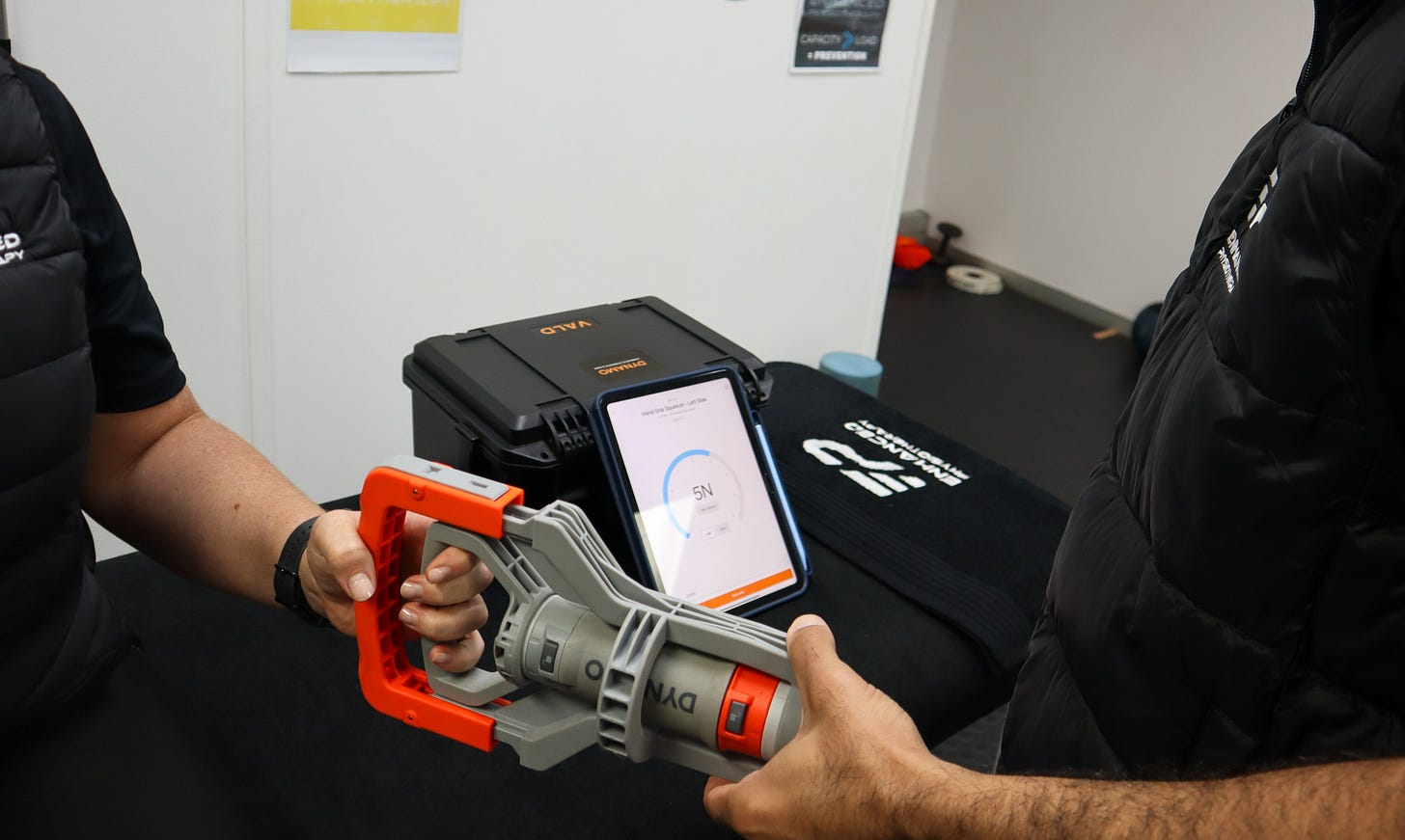Unconscious Incompetence...
Preaching to the choir is the easy part, but what about convincing the non-believers? This is a commentary on all the push-back I experience when discussing the use of technology in rehab…
It's a strong title, I know. Perhaps even erring on the side of clickbait - however, in my defense, I genuinely don't know what else to title this piece. The case against, or the push-back I observe, can only be described as "unconsciously incompetent." Allow me to use hyperbole here, but these are good professionals who care about their patients and their careers - however, they are unaware of what they're unaware of - and therein lies the problem.
During my undergrad, between 2009 and 2012 - I was introduced to the goniometer. It was labelled an outcome measure, and although it was slightly cumbersome, this plastic device was meant to measure the effectiveness of our therapy. We needed to track the increase of movement in a stiff joint over time. Let's skip ahead. The year is now 2017, and I'm completing my masters coursework in sports physiotherapy and we start to use an "inclinometer" app on a smartphone. Very cool - we can now ditch the flimsy goniometer for something digital - but you still need to write down or note the measurements somewhere. Now, let's cut to the present day; I'm currently using the VALD DynaMo Plus or Lite to measure joint ranges, but here's the difference:
It measures range; it saves the measurements to my patient's profile, pushes the results to their smartphone, my clinician dashboard, and also graphically displays (to my patient and to me) the results of every measurement over time - something every client is excited to see.
That's the evolution of technology in a nutshell, but here's the kicker - it's an incredible challenge to get my fellow clinicians to see how incredibly useful that actually is…even when there's no cost involved!
It begs the question…What else are we (un)knowingly missing out on?
Let's hypothesize that you are using force plates, for example. Still, you have a unit that doesn't have the ability to use wireless app connectivity - you're now confined to wherever your plates are installed and the PC is mounted. Okay, that doesn't matter; all your athletes only train in the gym - well, is there a cloud-based database where you can view data and create reports from home? Oh, so you physically need to be in the gym, on the PC, wired to the plates? I thought as much - well done, you're using technology, but bad luck - you didn't complete all the homework…
Here's another scenario, it's 2025, and you prescribe exercise by writing on a page and handing it to your clients - someone tells you that MoveHealth is literally free for all clinicians. Still, you say it doesn't have all the exercises you like to use (apologies, you must be the Da Vinci of program design). You say this, but you've also never bothered to try it out because you don't have time; this is because your time is taken up by writing programs by hand.
Perhaps you pay for an exercise prescription app, but it spits out programs to your clients as a PDF, and they either need to print it or have it saved on their phone and hope they can follow along at home or in the gym. Unfortunately, you have no idea if they use it because, unlike Movehealth+, you can't see how many times they've opened or completed the program or even the specific reps and sets. You can't get real-time feedback from them via the app around their RPE or pain during exercise - two beneficial metrics for a clinician to receive; however, you'll now have to rely on their recall when they're sitting in your office.
I am, of course, being facetious - but all good jokes contain some truth… Why the heck are we persistently resistant? Why are we not embracing technology that ultimately makes us better professionals, gives our patients better outcomes and enhances our therapeutic alliance infinitesimally?
Learning new skills and being presented with new information is scary, and we don't want to be seen as a novice (even though that is a normal part of the learning process). Sometimes, the best clinical advances have the lowest uptake rates - look at the Nordic hamstring protocol, widely supported by literature but poorly adopted by sports teams and clinicians for a myriad of "rational" reasons.
Perhaps we're not unconsciously incompetent; maybe we are consciously aware of everything that we don't know or are overcome by fear and our own inadequacies and thus resist. Either way, my point here is not to punt a single technology but to ask my fellow clinicians, just like the evolution of joint measurement from the goniometer to the Dynamo Lite - surely the only constant is change, and it's our job to stay relevant and abreast of the latest developments in our field - if not for our own curiosity, then maybe in the best interest of our patients?
I didn't want to bring ethics into this, but maybe I need to end on this bombshell - is it not our ethical duty to give our patients evidence-based tools to improve their health outcomes and enhance their rehab experience?
We have to measure our interventions, we have to use validated questionnaires, we have to prescribe exercise with tools that enhance patient education and compliance - not because it's in vogue, but because it's our jobs as health professionals. The current situation we find ourselves in is much more serious than I've hyperbolized above - the uncomfortable truth is that resisting technology-driven evidence-based practice isn't just outdated—it's a disservice to every patient who trusts us with their well-being.
As always, the purpose of these pieces are to stimulate meaningful dialogue and I would appreciate your input. Thanks for making it to the end,
-NP


